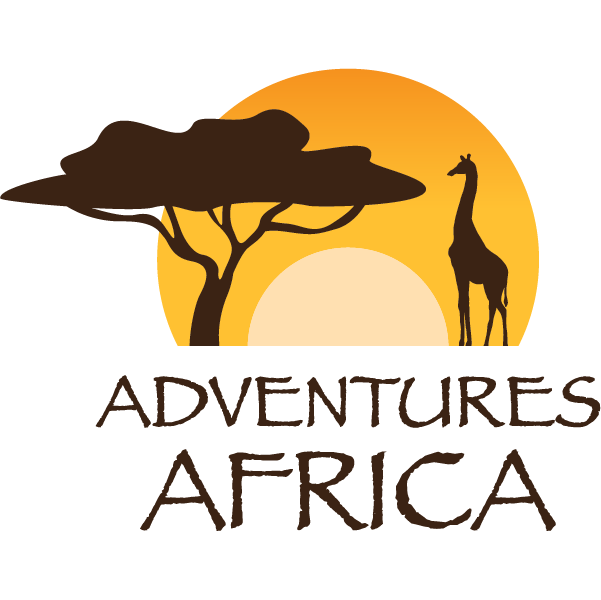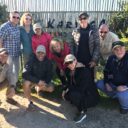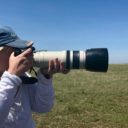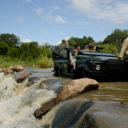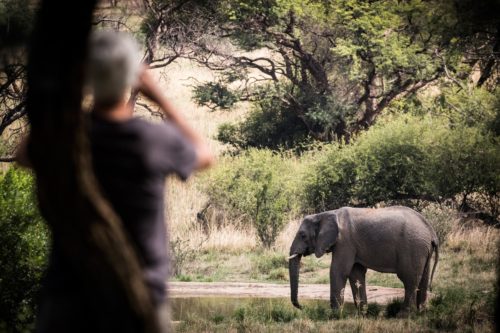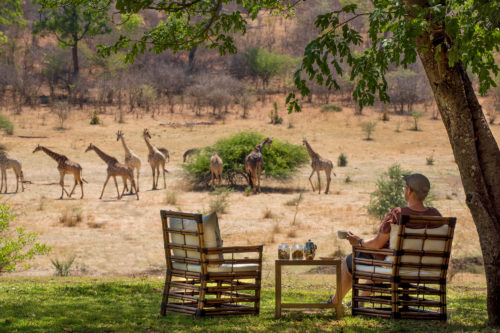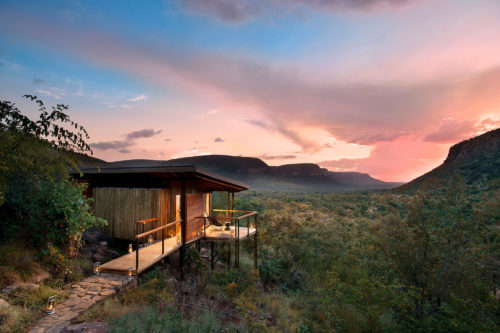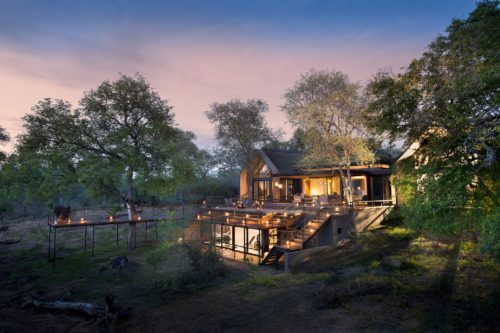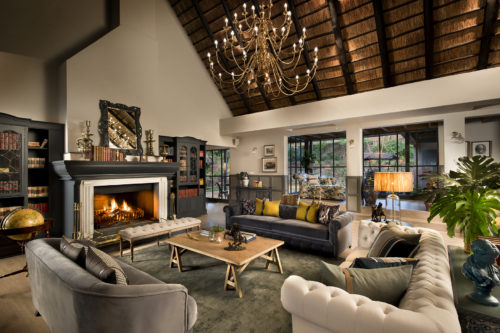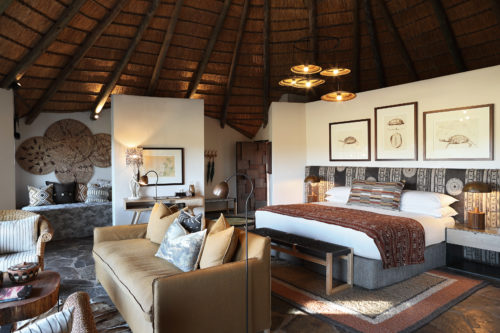Shamwari
Adventures Africa Educates Group Leaders With A Trip to Beautiful South Africa
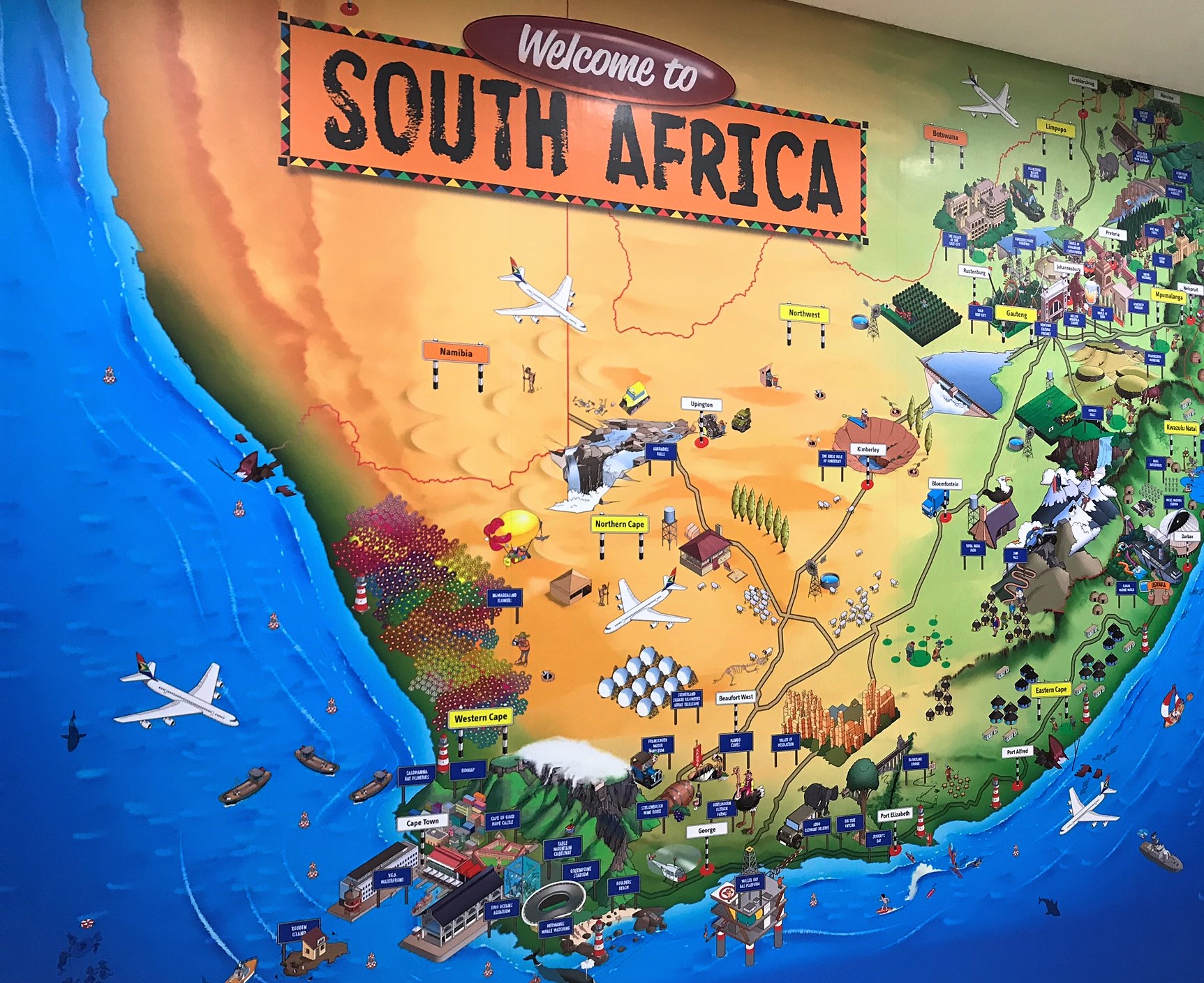 Our team of travel experts at Adventures Africa has been fortunate to visit some of the most interesting places on our Mother Earth. But truthfully– the more places we go, the more we realize how difficult it is to top the continent of Africa, and South Africa in particular.
Our team of travel experts at Adventures Africa has been fortunate to visit some of the most interesting places on our Mother Earth. But truthfully– the more places we go, the more we realize how difficult it is to top the continent of Africa, and South Africa in particular.
Along with the natural beauty that is the background for South Africa are all the memorable and adventurous activities we can arrange for our travel guests. African wildlife safaris are usually #1 on everyone’s list. To be so close to such majestic animals in their natural habitat is an experience never forgotten. But game drives are not the only adventures available. offered.
You can have very active outings such as cage diving with sharks, bungee jumping, zip-lining, kayaking and hot-air ballooning. Different cities offer full contrasts of experiences such as delicious food and wine, scenic outdoors with breathtaking nature, an expansive coastline with an abundance of beaches, and the most important of all—the South African culture. No matter where you go, the warm hospitality of the people will leave you feeling welcome and eager to return.
One of the goals of the travel experts at Adventures Africa is educate as many people as possible about this remarkable country so that travelers can consider it for their future plans. We send many groups to South Africa, so when we have the opportunity we send group decision makers there to experience this destination in person.
Then they can share their impressions with their group members, and together they plan for all to go and enjoy it for themselves. Our most recent group leader FAM (familiarization trip) was to the Eastern Cape, the beautiful city of Cape Town, and to the Cape Winelands. We had the pleasure to host eight directors of U.S. travel clubs, and here is what they experienced during their stay.
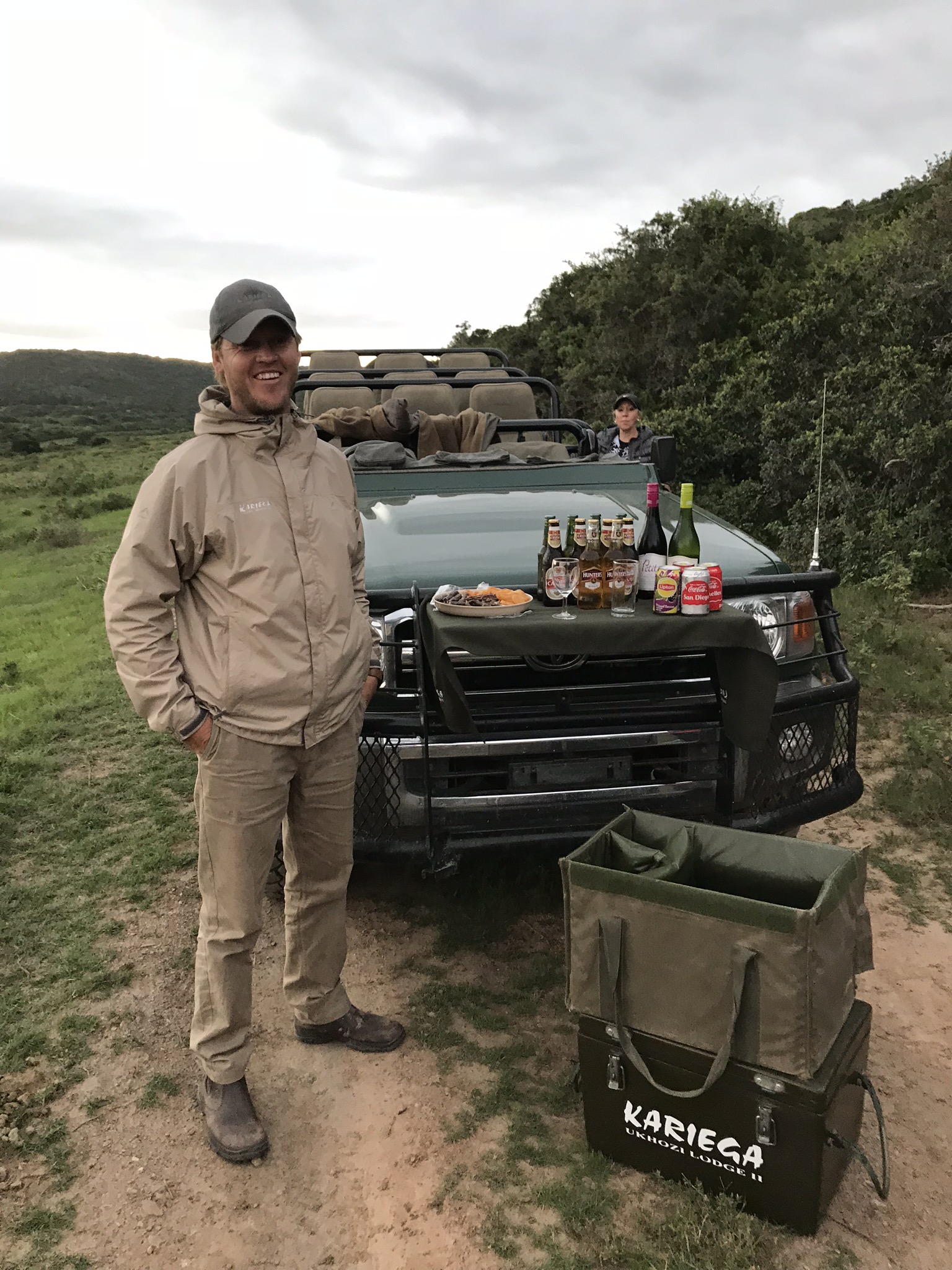 Our trip started with a pleasant hour and a half drive from Port Elizabeth airport to Kariega Game Reserve, accompanied by our driver-guide. His knowledge about the Eastern Cape and Port Elizabeth was extensive and we all enjoyed the stories about the history of Port Elizabeth and the lives of its residents. Upon arrival at Kariega Game Reserve, we were warmly greeted and given a short introduction to the resort. Juan, our ranger, took us to our chalets at the Main Lodge area which was our home for next 3 nights.
Our trip started with a pleasant hour and a half drive from Port Elizabeth airport to Kariega Game Reserve, accompanied by our driver-guide. His knowledge about the Eastern Cape and Port Elizabeth was extensive and we all enjoyed the stories about the history of Port Elizabeth and the lives of its residents. Upon arrival at Kariega Game Reserve, we were warmly greeted and given a short introduction to the resort. Juan, our ranger, took us to our chalets at the Main Lodge area which was our home for next 3 nights.
We were accommodated in three ensuite bedroom log chalets with large private decks and gorgeous views of the game reserve. The chalets were tucked away in the brush, so we felt totally private yet were only a short walk to the main lodge with dining area, bar, curio shop and swimming pool. We had one game drive the first evening, and a total of 5 game drives by the end of the stay. Each drive was three hours of photo-safari experience starting at 6:00am and going again in the afternoon at 4:00pm. No two games drives are ever alike, mainly because of the animals’ natural behavior. We were able to see lions and lionesses, elephants, rhinos, giraffes, hippos, zebras, buffalos, ostriches, monkeys, impalas, and warthogs, and all at very close range.
Unfortunately, we did not get to see leopards during this trip. Our guide Juan was very knowledgeable and very kind and empathetic. He provided us with a wonderful experience while being sensitive and respectful to the animals. He unraveled many secrets of the African bush and taught us to understand the environment so much better. We all agreed he was quite exceptional.
The dinners were served outdoors by the light of lanterns and a central fire in a ‘boma’, which is a traditional place made to enclose outdoor dining areas and create a warm space where guests can enjoy meals under the African night sky and after a day out on a game drive.
Beside enjoying the beauty of a game reserve and the wildlife, the highlight of the stay was when we were taken to a secluded track off the beaten path during a game drive. After a short distance, we stopped, got off the safari vehicle and walked through the bush. We came out to a welcoming setting with lanterns creating a circle of light around chairs and tables set with snacks and drinks. What a surprise! It was truly a magical and special moment that none will ever forget.
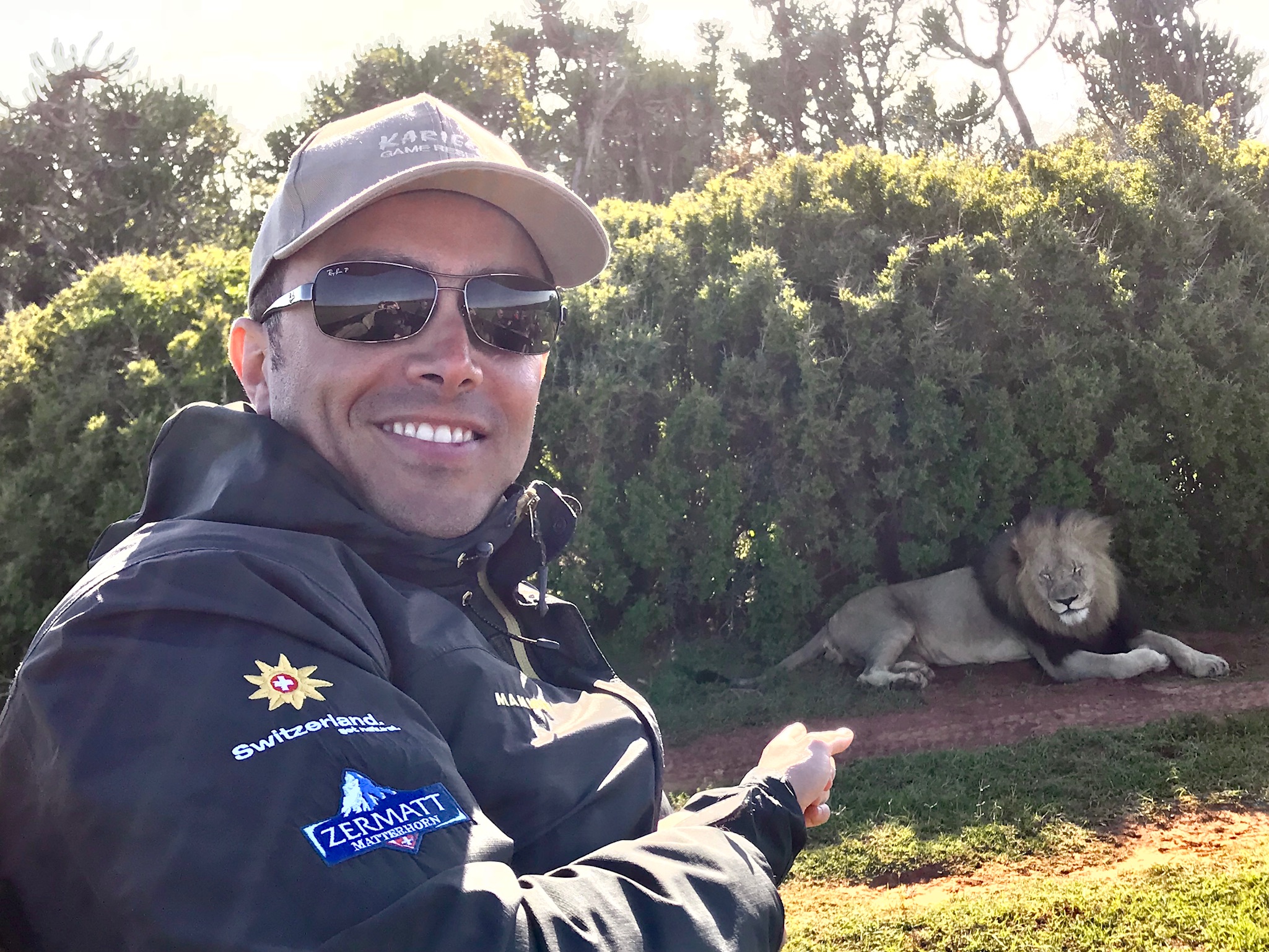
Our next stop: Cape Town, the Mother City of South Africa. We went back to Port Elizabeth Airport to depart on a nonstop flight to our next adventure.
Our host for the next three nights in Cape Town was the Commodore Hotel, which is conveniently located only a short stroll to the Victoria & Alfred Waterfront. It’s only few minutes further to walk to the main shops and restaurants.
You can get out and about very easily. The hotel itself is traditional and colonial in style with maritime themes. The rooms are very spacious, with gorgeous views of Table Mountain. The hotel staff from the front desk to the concierge was very friendly and attentive.
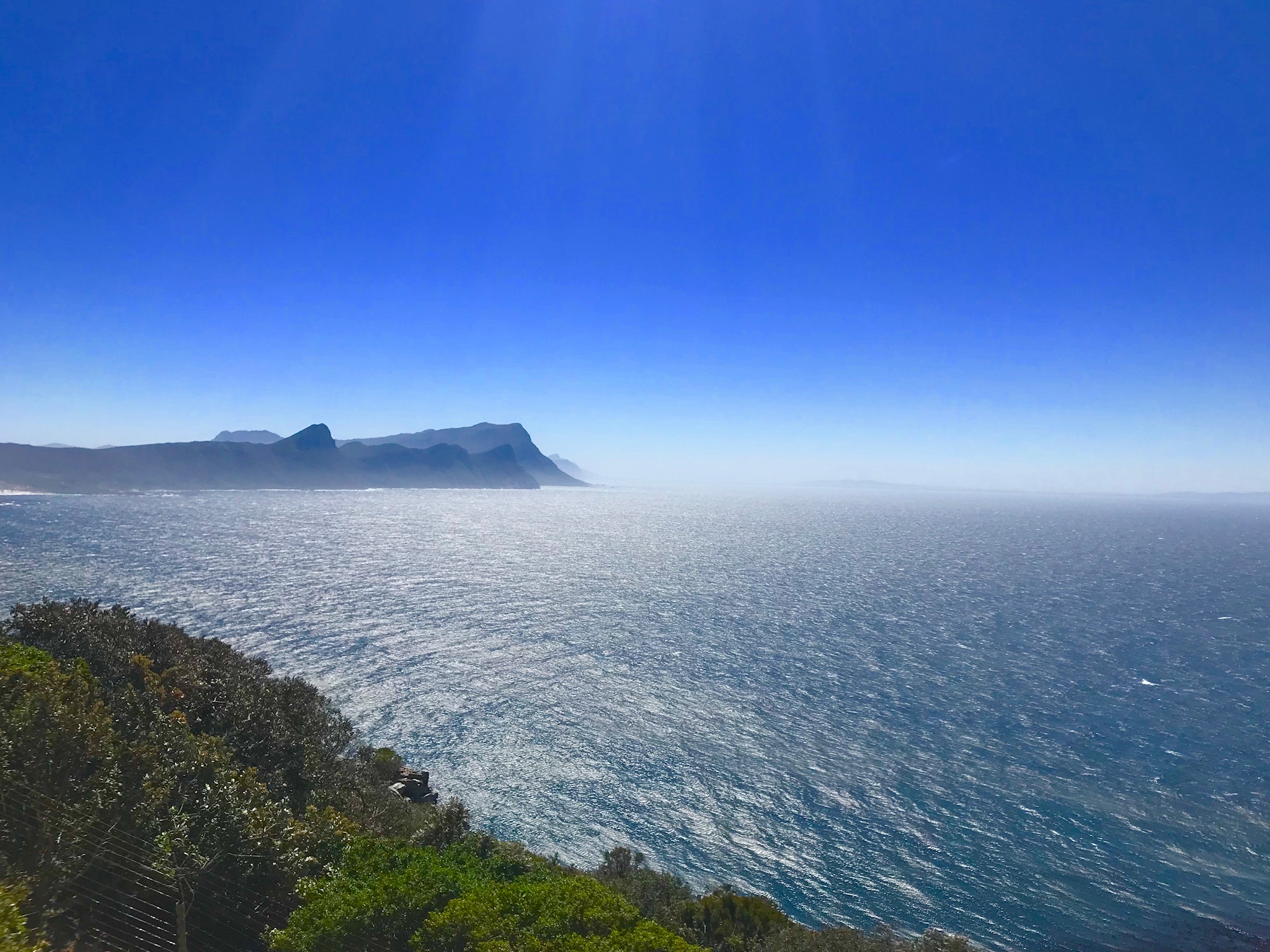
As travel planners, we are delighted to know that our Kariega three-night stay will help our trip leaders to return to South Africa, wanting their groups to experience the magic of this storied game reserve, its lodge team, and its skilled rangers.Our itinerary for next two days was filled with many ‘must-see’ tours for first time visitors. Big thanks to our guide Ivan, a human fountain of knowledge for all things Cape Town and South Africa.
Highlights of our trip down to Cape Point Peninsula included one of the world’s most spectacular drives, Hout Bay, Chapman’s Peak, Noordhoek Beach, the Cape Point Nature Reserve, two lighthouses on the tip of Africa, Boulders Penguin Colony, Simon’s Town, Kalk Bay and the Kirstenbosch Botanical Gardens.
Our Chapman’s Peak drive wound its way between Noordhoek and Hout Bay. Situated on the Atlantic Coast at the south-western tip of South Africa, it is one of the most spectacular marine drives anywhere in the world.
The six-mile route, with its 114 curves, skirts the rocky coastline of Chapman’s Peak. The drive shows stunning 180° views with many areas along the route where you can stop and take in the scenery or sit down for a relaxing picnic.
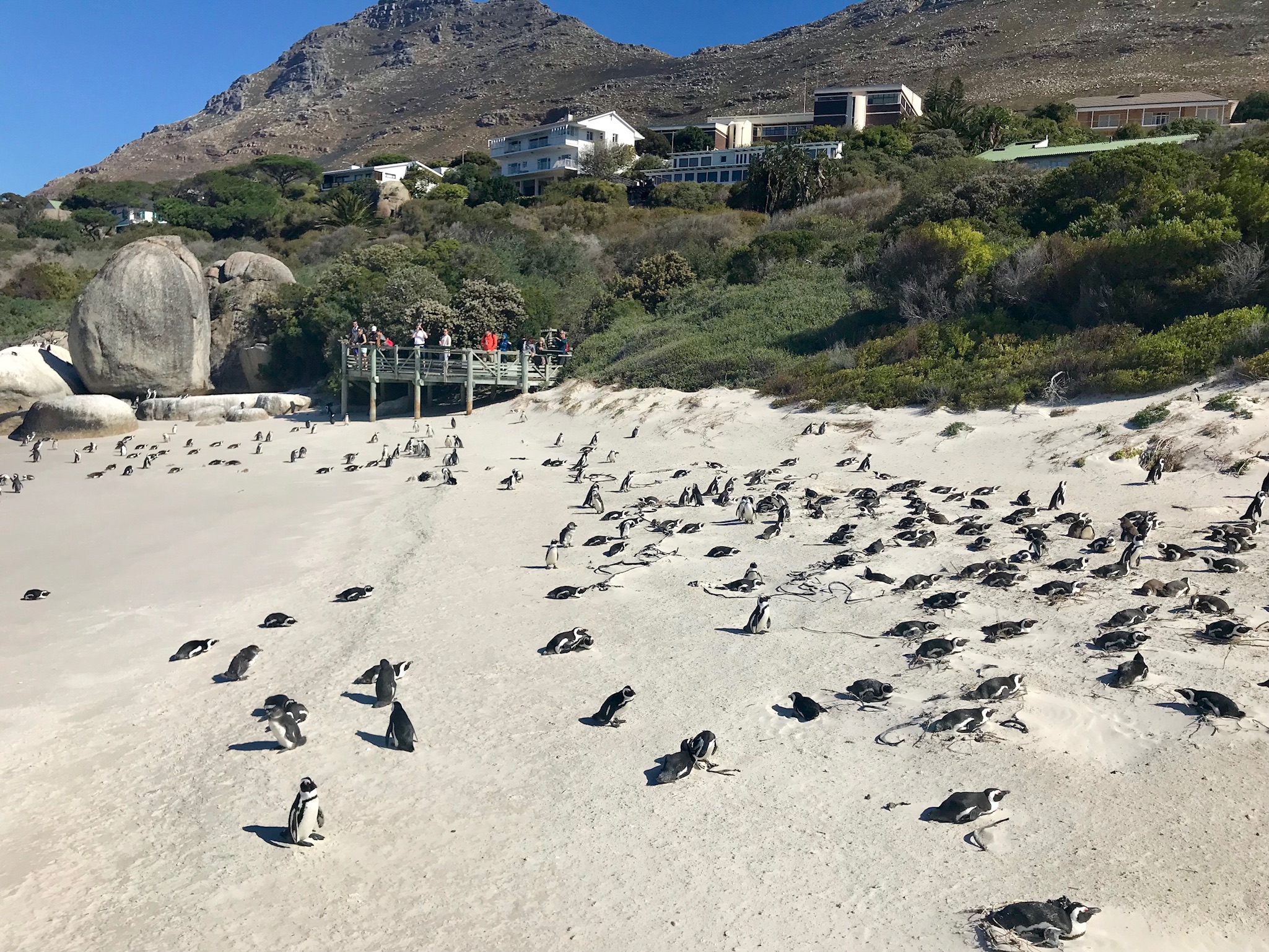
The Boulders Penguin Colony is a picturesque area, with enormous boulders dividing small, sandy coves. It is home to a colony of some 3000 delightful African penguins. The bulk of the colony, which has grown from just two breeding pairs in 1982, seems to prefer hanging out at the beach, where, like nonchalant, stunted supermodels, they blithely ignore the armies of camera-toting tourists snapping away on the viewing platforms. The aquatic birds, which
are an endangered species, were formerly called jackass penguins because of their unique, donkey-like braying.
Simon’s Town is nestled on False Bay, within easy distance of Cape Town. It is rich in history, character, atmosphere and warmth. The neighbors to Simon’s Town are whales, penguins, seals, and world-heritage- status birdlife. Simon’s Town offers one of the best holiday accommodations in Cape Town and features the beauty of the Table Mountain range, Cape Point and the Cape of Good Hope. This town has stunning views in the most beautiful environment of the Cape Peninsula.
On the lower slopes of Table Mountain, the beautiful Kirstenbosch Botanical Gardens showcase some of the Cape’s rich flora. Taking center stage is the unique ‘fynbos’ vegetation. Featured in this garden paradise are the restaurant and the tea room, with tempting delicious meals, yummy treats and refreshing beverages. Kirstenbosch is rated as the seventh best of its kind in the world.
With straight cliffs and a long flat summit, Table Mountain names itself. Rising over 3,200 ft above sea level, it is the icon that makes Cape Town instantly recognizable. It is a symbol, a playground, a spiritual retreat and a must-see for South African tourists. Table Mountain is so intertwined with the identity of Cape Town that a visit to the city isn’t complete without having walked or taken the cable car to the top.
South Africa’s Cape Winelands are only an hour drive from Cape Town. These valleys and mountains have become synonymous with some of the world’s finest wines. Spectacular mountain scenery, fine hotels and guest houses, 300 years of wine making history, and many of the country’s top restaurants combine to make the Cape Winelands a much-desired destination.
This is the center of South Africa’s award-winning wine industry. The places of interest include Stellenbosch, Franschhoek, and numerous other noteworthy wine estates. We visited two wine farms that included with cellar tours and wine & cheese tastings.
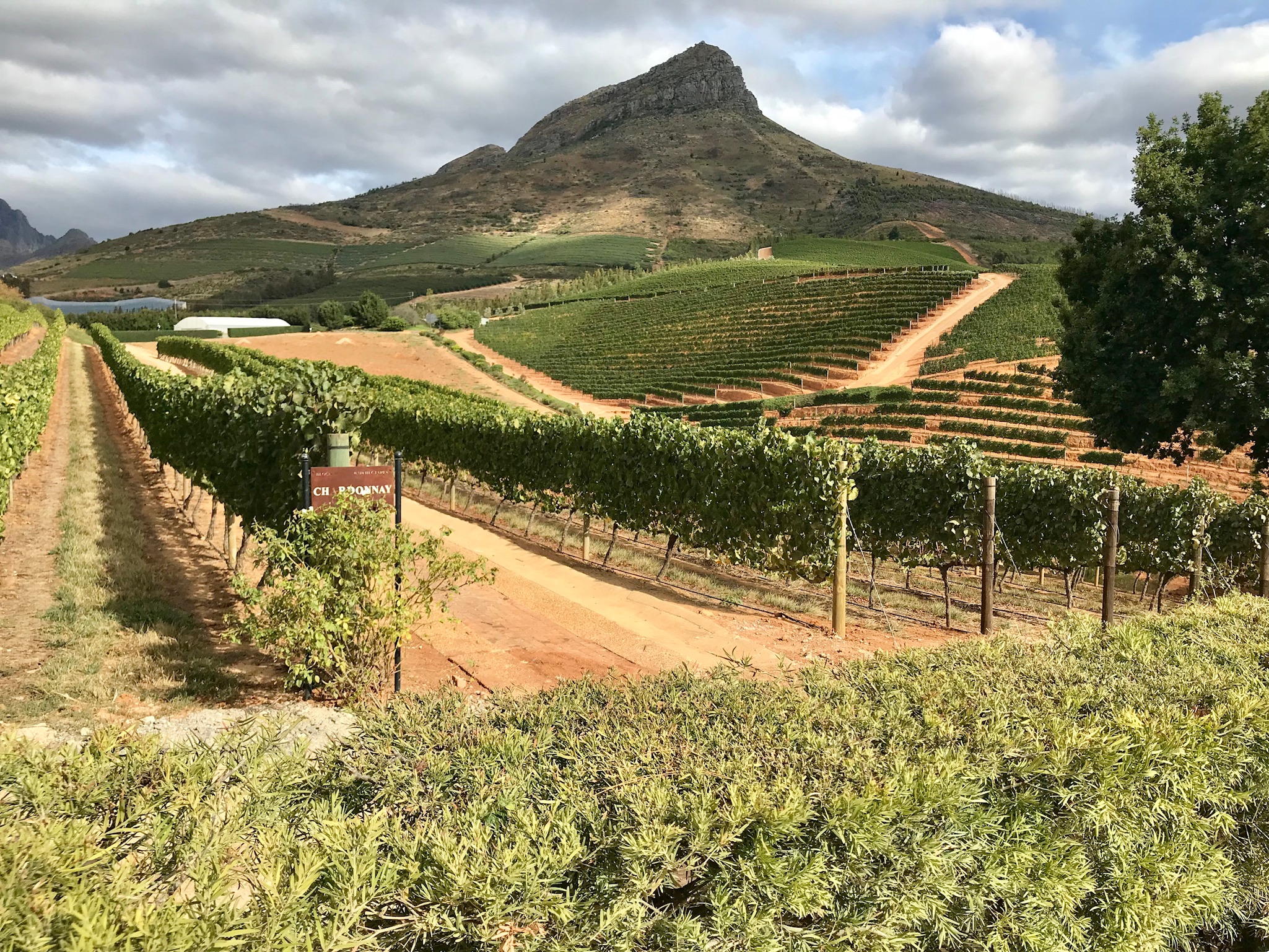
Idyllically situated in the Cape Winelands, the peaceful country retreat of Franschhoek is one of the oldest towns in South Africa. The once sleepy little village, whose name means ‘French Corner’, was founded by French Huguenots. The fertile valley of Franschhoek’s rich heritage is showcased at the fascinating Huguenot Memorial Museum.
The Cape Dutch architecture in much of the village remains remarkably well preserved. The town’s proximity to Cape Town allows for pleasant day trips during which visitors can explore the area’s many world-class wine estates, the impressive range of excellent restaurants, or browse the quaint boutiques strewn along the town’s lovely tree-lined avenues.
Cape Town is one of the world’s most beautiful cities, and it has fascinating history, interesting culture, natural beauty, award-winning wines, and a laid back lifestyle. It captures your heart and all your senses and will remain as a collection of memories that will always bring a smile to your face.
Our educational trip for group leaders started in the bush with the wildlife for which Africa is uniquely famous and ended with tours in and around one of the loveliest and most celebrated cities in the world. This is Africa and it is our specialty. Whether you are traveling with your family, with a group, or going solo, Adventures Africa can create the life trip that will always remain as your favorite.
In addition, another part of this wonderful journey was a pre-ski trip to Alpe d’Huez, the main resort of the fabulous ‘Grandes Rousses’ ski area and mythical La Grave, the legendary off piste ski resort (both located in France). By putting together these two destinations, the ultimate SKI and SAFARI experience was delivered to all travelers.
Approximate package cost for this type of program is $2,500 USD, based on low season rates. Inclusions: 1-night stay in Johannesburg, 3 nights in Kariega Game Reserve, 4 nights in Cape Town, and all ground transport and tour/activities.
TAKE A LOOK AT OUR PACKAGES HERE
Magical Kenya
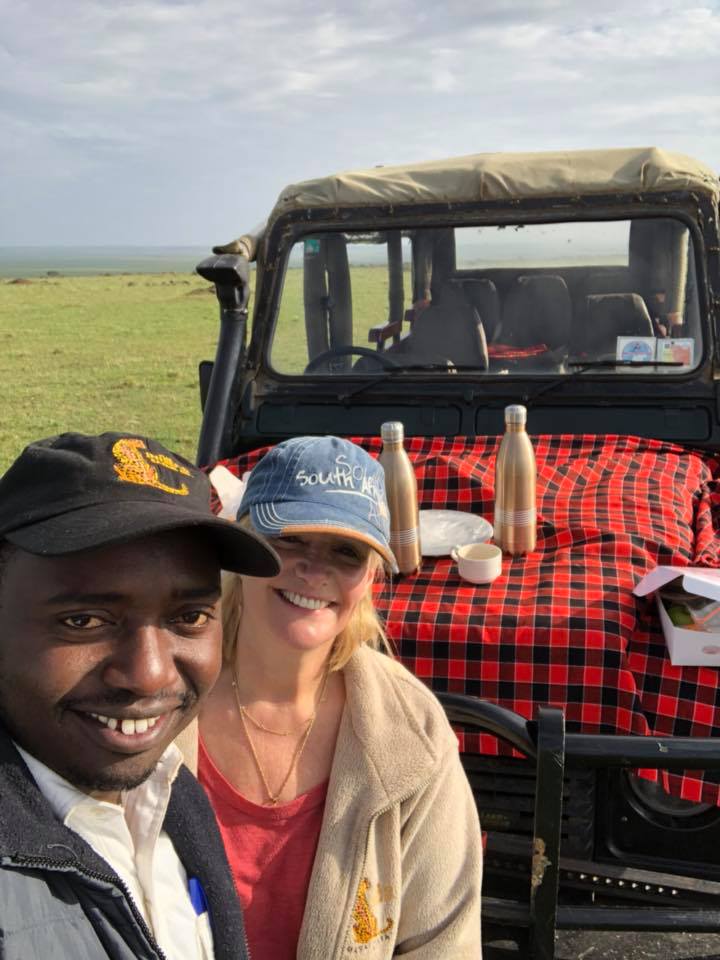 When anyone mentions Kenya, I can’t help but smile.
When anyone mentions Kenya, I can’t help but smile.
What images does Kenya bring to mind? For me, it’s the romance of Out Of Africa, the wide-open spaces, the abundant wildlife, and the smiles of the locals.It’s morning in Nairobi. The smell of Kenyan coffee coming from the restaurant is beckoning. “Kahawa tefedali“ (coffee please.)
It’s a beautiful morning in Kenya.
First, visit the orphans
Traffic is horrendous, but I don’t care–I’m in Kenya! I’m heading to the Daphne Sheldrick Elephant Orphanage to visit the 2 baby elephants I have adopted.
It’s an amazing place with an amazing story. The Orphanage started from the passion of the family to rescue and save baby elephants that had been orphaned by poachers and other tragedies. To date, the orphanage is still the most successful rescue and rehabilitation center. The Daphne Sheldrick Elephant Orphanage is a must-visit.
On to the Masai Market
It’s a sensory overload of wooden sculptures, beaded necklaces, batik wall hangings, soapstone carvings, bags, textiles and a whole host of other exciting goods. While it’s a great place for souvenir shopping, don’t forget to bring your best haggling skills. It’s fun for the shopper and the seller alike.
Nairobi’s own National Park
Did you know that Kenya is the only capital city in the world that has an adjacent National Park? Driving in Nairobi next to the park I have seen giraffes, zebras, elephants and once I even spotted a lion. How many cities in the world can offer this? And when in Nairobi, you have to make time to visit Daisy the giraffe. Daisy is one of 10 Rothschild Giraffes living at the Giraffe Center in Nairobi. Here you get to meet and feed giraffes and if you’re lucky, get a lovely wet kiss.
Samburu National Park
Time to leave Nairobi and head into the national parks. You can start in Samburu in the North.
Samburu is dry and arid, but rich with unique wildlife species known as the Samburu 5: the Grevy’s zebra, Somali ostrich, reticulated giraffe, gerenuk, and the beisa oryx. But let’s not forget the other, classic, African Big Five: lion, elephant, rhino, leopard, and buffalo.
There are beautiful tented camps all over Samburu. Try glamping Kenya-style. Samburu Intrepids will offer an unforgettable stay. The guides will amaze you, and their knowledge of land and animals will keep you enthralled. The elephants in Samburu are known to be some of the most relaxed elephants in Africa. They often approach the vehicles just out of curiosity.
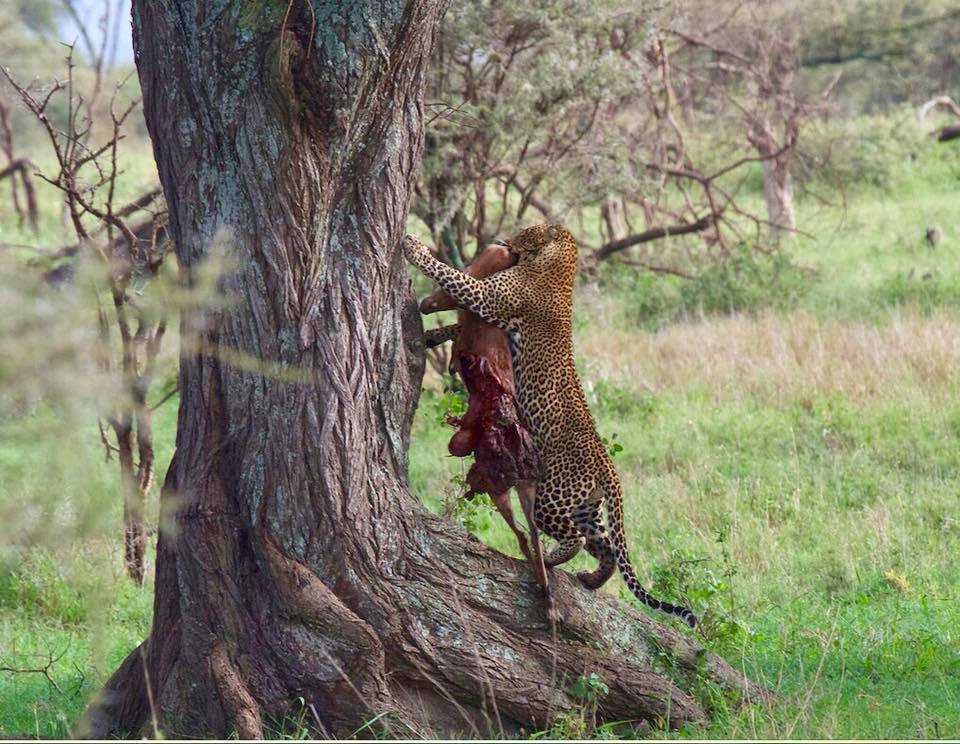 The Masai Mara is calling
The Masai Mara is calling
It’s a “tiny” piece of land (in comparison) in the southern part of the country, adjacent to the massive Serengeti in Tanzania. It’s as close to heaven as you can get. The Mara is renowned for its big cat population. Here you will see large prides of lions, families of cheetahs, and amazing sightings of the oh-so-elusive leopards.
The Mara is world famous for the migrating zebras and wildebeest that cross over from the Serengeti every year from July to October. This phenomenon is known as the Great Migration or “The Greatest Show On Earth”. On the Talek River in the heart of the Mara, you will find Mara Intrepids and its luxury sister camp, Mara Explorer.
The guides here are legendary. Their intimate knowledge of the terrain and the “hangouts” of the big cats will make your visit to the Mara life-changing.
You’ll remember those African sunsets
It is true that it’s worth the whole trip just to see an African sunset. The Masai Mara delivers sunsets in spades. The camps arrange a fantastic sundowner experience under an iconic Savannah acacia tree.
You get classic gin and tonics, snacks, and music.
The Masai singers and dancers will teach you about their customs. See if you can jump half as high as they can, and if you’re lucky, you will receive a blessing from their chief.
At the end of a long day, the comfort of the camp is calling. As you drift into sleep, in the background you can hear the mighty lion calling to his brothers and mates.
You can’t begin to see it all in one visit. Come back to Kenya to see more. There are still other fabulous reserves to visit. Tsavo East, Tsavo West, Amboseli, Lake Naivasha, Lake Nakuru, and Aberdare. And let’s not forget about the sparkling white beaches of the Kenyan coast.
To prepare you for your next visit, here are some easy Swahili words to learn:
- Jambo – Hello
- Habari – also Hello / Good Morning. Use this one when speaking with older people.
- Nzuri – “Beautiful / Good / Nice / I am fine.”
- Karibu – Welcome
- Asante – Thank you
- Sana – Very Much as in Asante Sana – thank you very much. Respond with Karibu Sana.
- Lala Salama – Goodnight
You will come back—and you’ll be smiling.
#magicalkenya #whyilovekenya #karibukenya
TAKE A LOOK AT OUR PACKAGES HERE
South Africa – Eastern Cape, Garden Route and Cape Town
Written by Tessie Kenela
We start our adventure at Kariega Game Reserve, a family owned and operated private game reserve, home to the Big 5 (lion, elephant, rhino, buffalo and leopard) where our stay includes full board and game drives twice a day in open safari vehicles.
Kariega’s Main Lodge is cool, the gro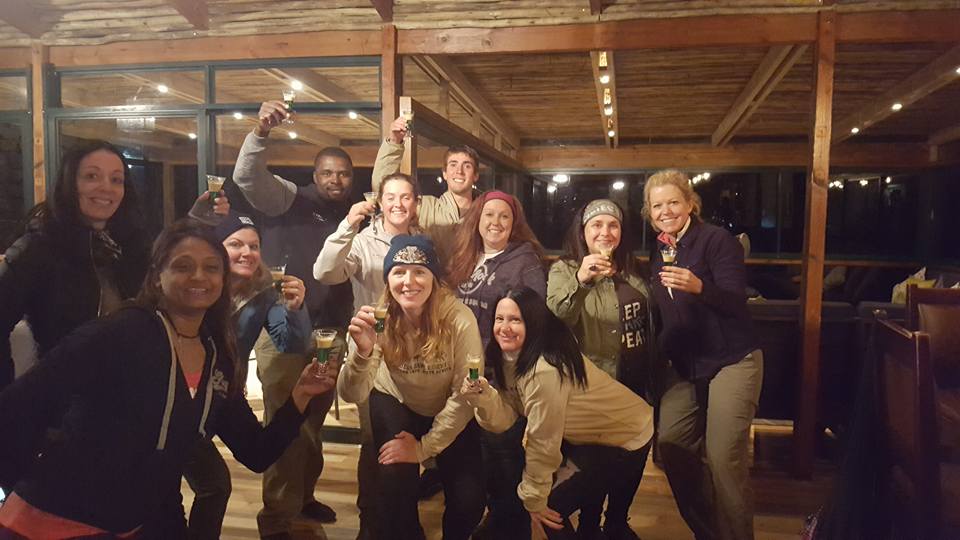 up got to stay in different spacious 2-3 bedroom log chalets with private decks and I stayed in the studio.
up got to stay in different spacious 2-3 bedroom log chalets with private decks and I stayed in the studio.
We spend the next four days alternating between game drives and being fed delicious meals. Our daily game drives always start early in the morning before breakfast and the second drive begins in the late afternoon so that we can end the drive with a happy hour in the bush. Our rangers bring an array of wine and spirits and snacks.
By the end of our stay, we have seen 4 out of the Big 5 as well as impala, hippo, hyena, giraffe, zebra, wildebeest, kudu and some warthogs!We leave the beautiful game reserve and start our journey along the Garden route to Cape town.
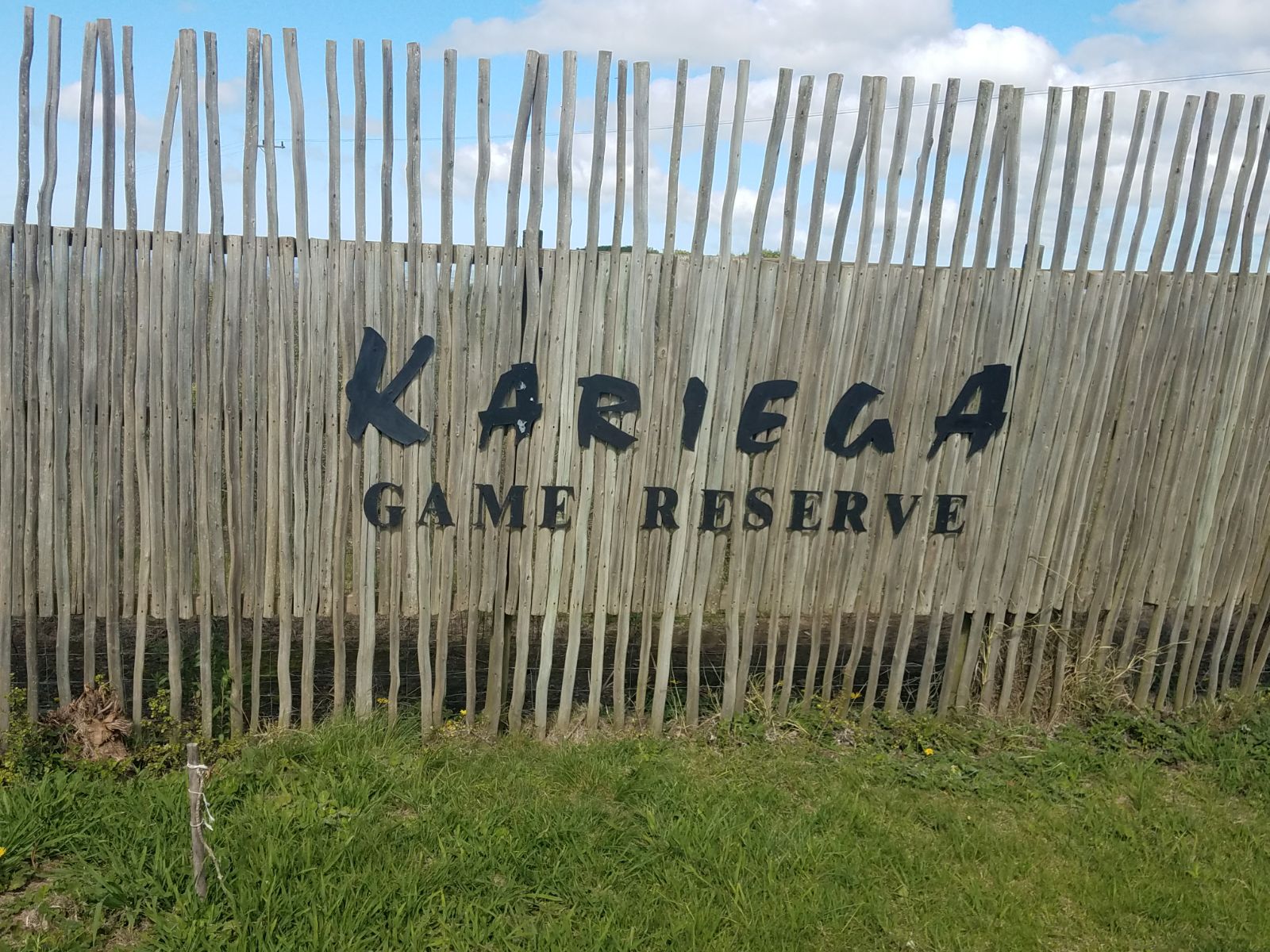
A few hours drive and we arrive at Tsitsikamma National Park, an area of the Garden Route on South Africa’s East coast divided by the Western Tsitsikamma Mountains. The group takes a nice hike up to the Storms River suspension bridge.
The pathway leading to the suspension bridge covers 900 meters of the Tsitsikamma forest. The walk is fairly easy, particularly if covered slowly. With magnificent views along the walk, its a peaceful atmosphere for any soul.
After many photos taken on the bridge, we depart Tsitsikamma as the sun is setting and the skies over the Indian ocean sets with the most beautiful tones of red, orange and pink we have ever witnessed, but that’s just a typical African sunset.
The next day the Garden Route takes us to Oudtshoorn, the ostrich capital of the world! But first we make a pit stop at Plettenberg Bay which sits right at the border of the eastern and western cape. We dip our feet in the lovely Indian Ocean, have some delicious super fresh oysters and do some shopping.
Once we arrive at The Congo Ostrich Farms, the group is given a full and informative tour where we see all aspects of ostrich farming and interact with the ostriches, which by the way, are just as curious about us as we are about them!The group spends the night at near-by Berluda Farmhouse and Cottages. Surrounded by olive and apricot orchards, and set within lush gardens, Berluda Farmhouse offers luxury accommodation with all modern amenities, from luxury suites to family cottages.
We enjoyed a traditional South African dinner of Karoo lamb and ostrich with some tasty red South African wine.
 The next morning, we get on our final stretch along the Garden Route stopping at The Cango caves.This one of the finest dripstone caves and one of South Africa’s natural wonders, with an extensive system of tunnels, with the section open to visitors being about 1 kilometer long and takes an hour and a half to tour. It was an impressive site to see!
The next morning, we get on our final stretch along the Garden Route stopping at The Cango caves.This one of the finest dripstone caves and one of South Africa’s natural wonders, with an extensive system of tunnels, with the section open to visitors being about 1 kilometer long and takes an hour and a half to tour. It was an impressive site to see!
Continuing the Garden Route, we arrive at our hotel, Winchester Mansions, in Cape town.Situated along the scenic Sea Point Promenade and facing the Atlantic Ocean, with the majestic backdrop of Table Mountain, Winchester Mansions in Cape Town is a 4-star, iconic seafront hotel, that has maintained its original Cape Dutch architecture. After a few cocktails in the hotel’s posh bar, we settle in for the night.
On our 7th day in South Africa, we enjoy a full day touring Cape town, an area regarded as one of the most beautiful regions in the world. The city is a rare cultural gem, resulting from the amalgamation of Indonesian, French, Dutch, British and German settlers.
The first part of the day is spent hopping around the beautiful coastal areas of Camps Bay, Clifton, Bantry Bay and Hout Bay as we make our way to Cape of Good Hope, a rocky promontory at the southern end of Cape Peninsula. Onto Boulders Beach to see a big colony of “jackass” penguins, given their name due to their distinctive mating call that sounds like a braying donkey and now know as African penguins.
A boardwalk has been built around the dunes so you can get a good close-up look at the entire colony eating, breeding, preening, swimming, and chatting away.
We spend the next day doing a full day winelands tour in Stellenbosch. A mere one hour drive from Cape Town, lie valleys and mountains which have become synonymous with some of the world’s finest wines. Our first winery is Neethlingshof wine farm. On our way to Neethlingshof, we drive through an avenue of stone pines a kilometer long.
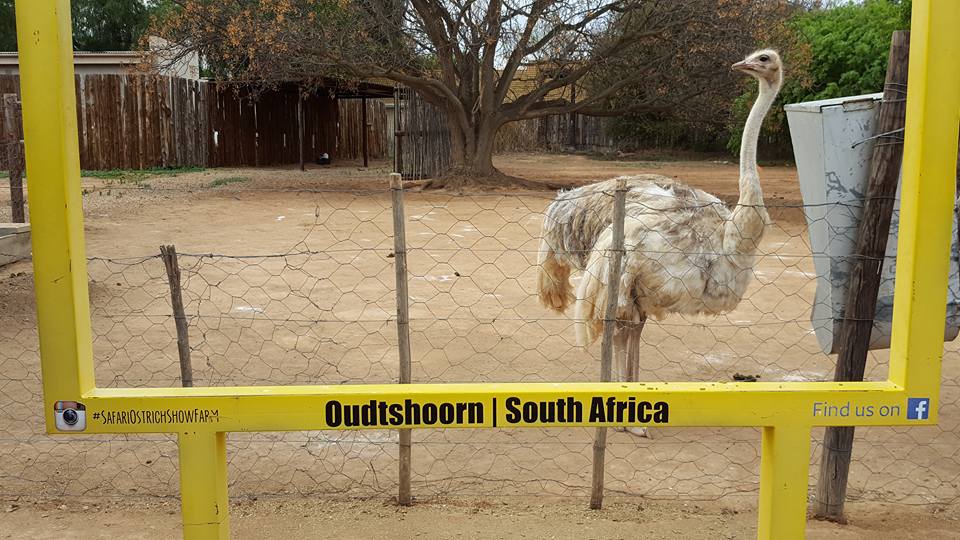
Not only is this tunnel green and amazing but can be seen on the wine labels of bottles. As we approach, a stunning vista unfolds complete with pristine Cape Dutch buildings and rolling green vineyards.The group has a light lunch here and we taste 4 different wines.
The next vineyard is Rickety Bridge Winery, nestled against the slopes of the Franschhoek Mountains overlooking the majestic Wemmershoek Mountain range, the 50-hectare wine estate has 27 hectares of vines, accommodation at Basse Provence Guest House and the Rickety Bridge Manor House, and a beautiful tasting room where guests can sample the superb Rickety Bridge Winery wines.
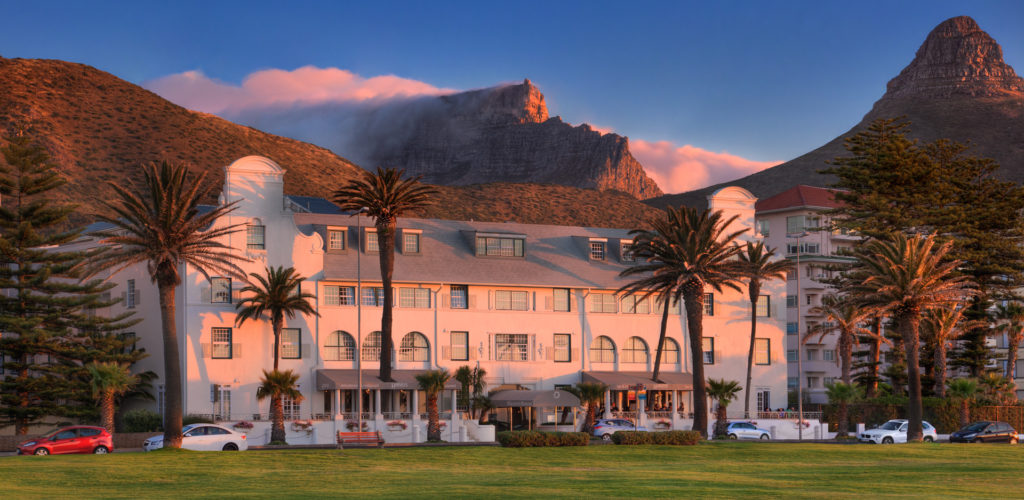
The last day in South Africa and beautiful Cape Town. It is a free day to explore.A few of us decide to first stop at bokaap, an area of Capetown with brightly painted houses and quaint cobbled streets.
Part of the Bo Kaap’s charm is the mix of Cape Dutch and Cape Georgian architectural styles which makes for amazing pictures!
Our next stop is Table Mountain, one of the Seven Wonders of the World. Whether the mountain is covered in a blanket of clouds or showing off against a cloudless blue sky, Table Mountain is always spectacular and a site that cannot be missed.
The easiest option for getting up the mountain is the cableway. Once you reach the top, you can marvel at the beautiful views of Capetown, the Atlantic Ocean, go for short walks on a few trails they have and/or rappel off the cliff; the option is yours!
We decide to play it safe and just take beautiful pictures as the sun sets on the horizon and our South Africa adventures comes to an end!
How To Get To Africa
Told by Rick Reichsfeld
Written by Barbara Clarke
I was sixteen when I packed my bags and headed south along the West Coast of California, on an adventure that would change my life forever. That solo trip to Mexico would make me look a little further than the forests of Portland, Oregon. Since then I have traveled the world and made it my life goal to experience as many places as I possibly can.
Working in the travel industry has taught me how to travel efficiently, getting to the next destination in the quickest and most comfortable way. Since discovering Africa in 2005, I have been fortunate to travel to East Africa and Southern Africa a number of times, and on different airlines and through a number of different international airports.
If you are traveling from the United States, the two quickest ways to Africa are either through Atlanta, Georgia or JFK, New York. There are some advantages and disadvantages to taking direct flights into Southern and East Africa. Johannesburg, South Africa is the main travel hub for all the Southern African countries. If you want to visit Namibia, Botswana, Zimbabwe, Mozambique or Zambia, flying into O.R. Tambo International Airport in Johannesburg is the most efficient choice.
If you want to visit one of the East African countries, traveling through Nairobi’s Jomo Kenyatta International Airport is a preferred option, especially on the non-stop from JFK, New York that starts in late October 2018.
There are pros and cons to flying directly to Africa from North America.
Flying non-stop, all in one go is the quickest way and sometimes the cheapest way to get to your destination. You won’t have long layovers in foreign airports, and this can save money on food and drinks. If your time to be in Africa is short, a direct flight may save as much as 24 hours in travel time depending on the routing.
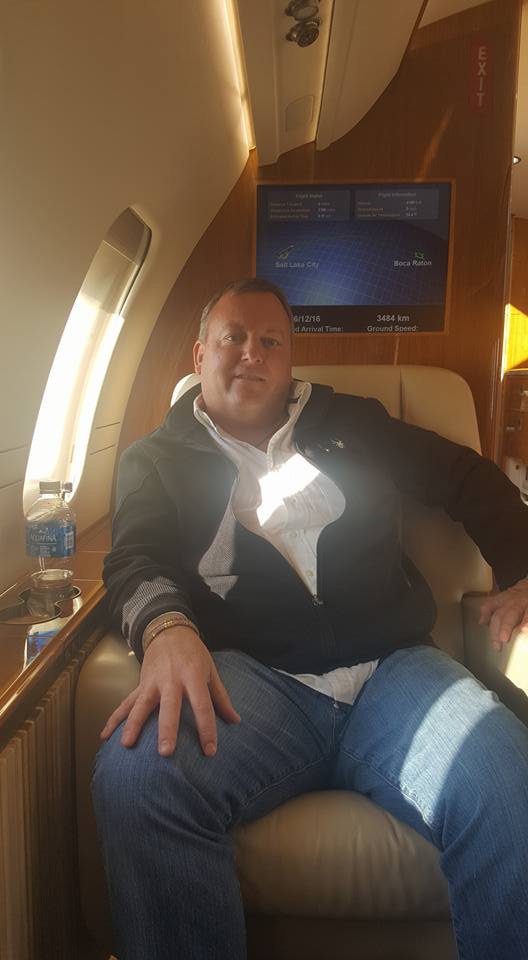
A possible downside is that you can be in an airplane for up to 17 hours. The quickest direct flight to Southern Africa is on the daily that departs from JFK (NYC) on South African Airways, also known as SAA. SAA uses the Airbus A340-600 with a total of 42 seats in business class and 275 standard seats in economy class. The business class seats are flat bed. This is the quickest flight to Johannesburg, South Africa, with an average flight time of 14-15 hours. This flight departs at around 11 am, and arrives at approximately 8 am the next day.
The benefit to this is that you will more than likely be on time for the next flight to your next destination such as Kruger National Park, Victoria Falls, and most other Southern African connecting flights. Because it is South Africa’s national carrier, you will be able to check your luggage with ease to your next destination as you process through customs.
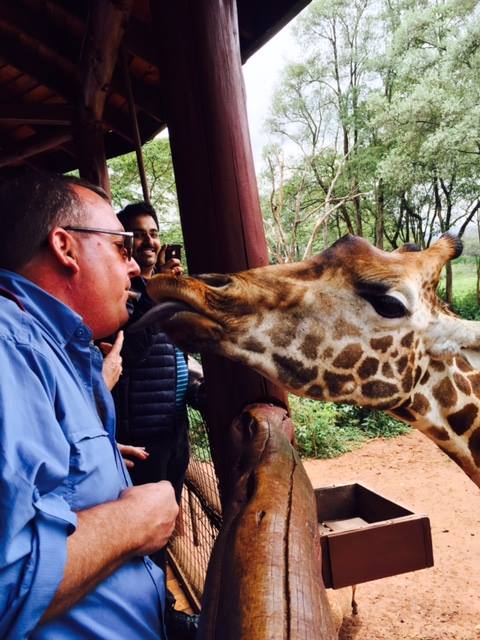
The A340-600 that is operated by SAA may be a different experience compared to what we are used to in the western world of travel. Once you board the plane you get this feeling of being in Africa almost immediately. If you have been to Africa, you know that things happen on African time and in an African way.
We need to remember that we go on vacation to relax and to get away from our perhaps too-busy lives. SAA’s staff will generally greet you with a warm style and open arms, however, a beverage or some help will be in African time: they will get to you when they get to you.
Embrace this and know that your journey to Africa will be filled with an array of social and cultural experiences. When flying business class, expect better food, better service, and better comfort.
If you stay in lodges and hotels, expect the same value of a business class flight. If you fly in economy, go with the flow and enjoy the ride. A very common term in Africa is “now now”. This could mean it will be done within 5 minutes, 5 hours, 5 days–or never. So be patient and ask for help again with a smile, as this gets most things resolved more quickly.
The other option for a direct flight to Southern African would be on Delta’s 777-200. Choose from 37 flat beds in Delta One, 36 seats in Delta Comfort, and 218 seats in economy class. This flight will take approximately 15 hours but could take longer depending on the headwinds when flying east. The Boeing 777-200 is well maintained and has an array of good media entertainment choices. Expect typical legacy airline service. This flight is daily and departs just before 8 pm, arriving the next day at around 8 pm. There are quite a few convenient hotels at O.R. Tambo International Airport. The City Lodge is a popular choice. It’s affordable and clean, and it is an easy walking distance from arrival and departure gates.
Jet lag is by far the most challenging aspect when flying across several time zones. My recommendation is to find a good hotel in Johannesburg, have a good rest when you arrive, and leave the next day for your safari destination.
Drink lots of water on your flight, try to get some sleep, and when you get to Africa try to sleep only during your normal sleeping hours. If you arrive in the morning, try to stay awake as long as you can to get your body clock to re-set to Africa time.
With Kenya Airways opening a new gateway into East Africa directly from New York’s JFK later this year, the flight time is the same as both SAA and Deltas flights into Africa. Kenya airways has great customer service and arrives into Nairobi, Kenya’s capital city. The company operates the Boeing 787-8. It’s a fuel-efficient aircraft with 30 flat beds in Premier class and 204 seats in economy class. From Nairobi, you can travel into Tanzania and other African countries with ease.
If you are traveling from the West Coast of North America, you will have to have a layover along the way, usually in Atlanta or New York domestically, or with international layovers in Amsterdam or Dubai. There are many airlines that fly to multiple African destinations through Europe and other Northern hemisphere countries. KLM, the Dutch airline, has a flight from LAX through Amsterdam with a very short layover. From Amsterdam, KLM flights can take you to either Cape Town or Johannesburg.
If you have the time and interest Dubai and Qatar are worth visiting, but I recommend flying to those destinations on either Emirates or Qatar airlines. These flights are some of the most luxurious air travel experiences you can have. These flights are usually 13 hours from the East Coast of the US, then another 6 hours to Kenya or 9 hours to South Africa. You can also fly through Istanbul on Turkish Airlines, and these are some of the most cost-efficient flights you can book.
Please remember that airfare depends on when you book the flights. Flights are generally cheaper when you book months ahead of your travel dates. Some layovers in some of these airports may be long and tiring, so you would do well to have a good book or two to read and entertainment already downloaded on your electronic devices.
See some of our Africa packages here.
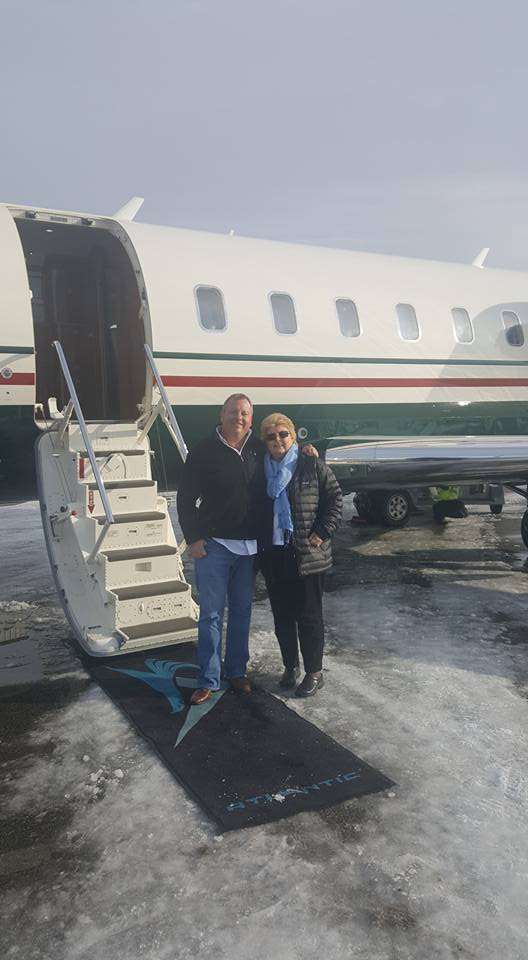
A Typical day on Safari
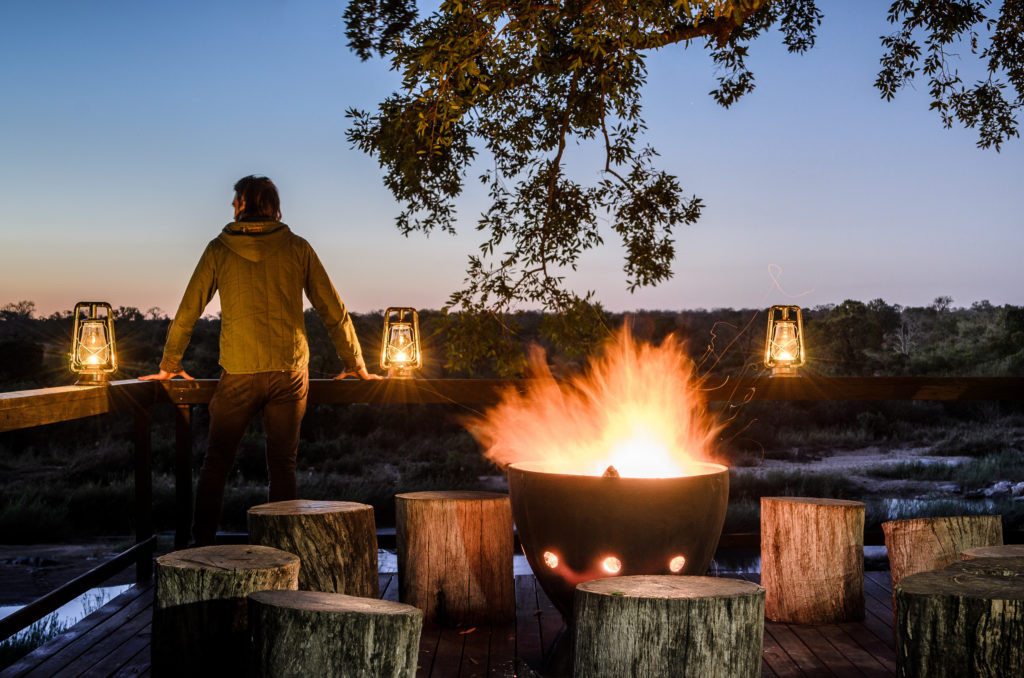 Every lodge or bush experience varies from place to place. This is a general overview of what a typical day is like on a safari in Africa.The general check in time for a bush lodge or safari camp would be around 1 pm. On arrival, either a manager or host will check you into the establishment.
Every lodge or bush experience varies from place to place. This is a general overview of what a typical day is like on a safari in Africa.The general check in time for a bush lodge or safari camp would be around 1 pm. On arrival, either a manager or host will check you into the establishment.
On check in you will be asked a few questions to ensure the staff may cater to your needs, within moderation, of course. Please always inform your travel agent if you have any special dietary requirements or if you have any medical conditions before traveling.
This will allow your travel agent to inform the lodge before hand allow the lodge/safari camp to plan ahead for your arrival.
On your arrival the person greeting you will go through the daily times, which will change from season to season but will predominantly look like this . . .
1 pm
Guests check into the chosen bush lodge or safari camp. Lunch is typically served on arrival, followed by your room check in. Typically your host will give you a brief orientation of the room and the facilities available in the room such as A/C units, light switches, how to operate certain items based on the facilities you have chosen.
3 – 4 pm
High tea is served in a common area.This is the time guests will meet their safari guide, this is where your guide will introduce him/herself and brief you on the afternoon’s activity.
4 – 7 pm
On your first safari, and even if you have been on safaris in the past, your guide will give you a detailed safety briefing. It is very important that you pay attention to the guide’s safety briefing and adhere to the guidelines announced. A safari can be anywhere from 2.5 hours to 4 or 5 hours. This depends on what you are seeing and how far you have had to drive to find those elusive animals. During the safari, the guide will normally stop and you will have a chance to stretch your legs and have a snack and beverage. Please be sure to always stay hydrated. On these afternoon/evening drives be sure to take a sweater even in the summer months.
7 – 10 pm
On your return, you will have a choice of either heading to your room to briefly refresh or head to the bar or fire pit where you typically would have a cocktail and wait for dinner to be served.Dinner is then served until the time you choose to head to bed. We recommend having an enjoyable time but do bear in mind that the next day is an early start. One of the reasons safaris head out in early morning and again late afternoons is because the animals are most active during this time.
5 – 6 am
One of the staff members will knock on your door or call on the phone to give you a wake up call. Each lodge will offer a morning service with tea, coffee or hot chocolate brought to your bush room or to a common area where all the guests will meet.
6 – 9 am
Morning game drive– head out for some three hours or more in search of animals, birds and numerous amounts of others specimens you have always wanted to see.
9 – 11 am
Choose to rest, head to the spa (if available) or seize the moment and head out on a bush walk with your safari guide. Bush walks normally last around an hour. A bush walk is based around seeing the smaller aspects of nature. This is not to search for the bigger animals, however depending on the area of the walk, it is common to see big animals on these walks. Very exciting.
1 pm
Lunch is served again and the day is then repeated.
Safety guidelines
- Do not walk around at night without a guide — ever. During the mornings, if it is light out, it is generally okay to walk to the main area unaccompanied unless recommended otherwise by the camp or lodge staff.
- Always be sure to know the number to dial if there is an emergency, or be sure to know where the air horn or whistle is in case of an emergency.
- Animals will almost never bother you, especially inside your accommodation. Never try and be brave and approach or touch any animal whether it is big or small. These animals are wild. They will respect you if you respect them.
- Do not feed any animal at any time. This causes animals to get comfortable with humans and will result in a number of issues either at the time of your stay or in the future for other guests.
- Have fun — as it is your time and your holiday. Try to do every activity that is offered, as you may not know when you will experience such a lifetime event again.
- Ask questions! If you are not sure of the daily itinerary or what activities are on offer, be sure to ask one of the staff members. If you are celebrating any special occasion, please inform your guide or one of the managers. They will try their best to make this trip especially memorable.
Check out our packages here.
Insider Tips From African Specialist Marion’s Recent Cape Trip
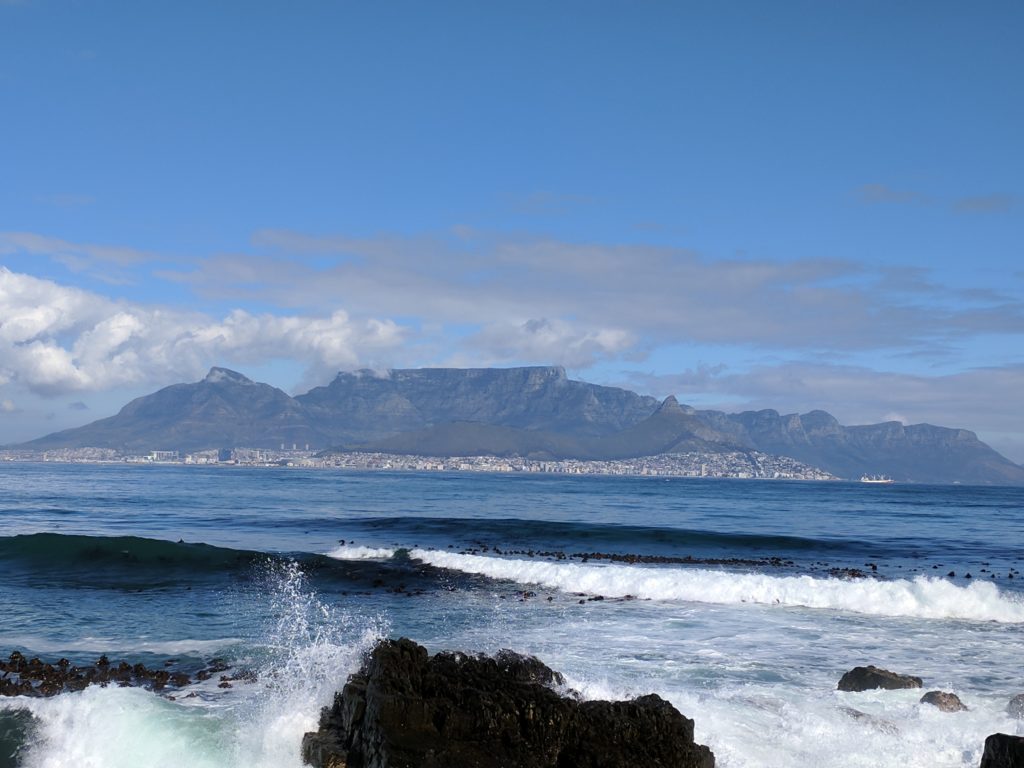 It has been pure pleasure to become an African Specialist while working for Adventures Africa. Recently I made my third visit to beautiful South Africa, but this time I was on vacation with my husband. I was determined to do my best to try to look at things on more of a personal level and not sot so much through my seasoned travel agent eyes. I hope I’ve been able to balance the two and give an account of meaningful travel with a travel expert’s truthfulness. Our first stop was Cape Town, the capital of South Africa.
It has been pure pleasure to become an African Specialist while working for Adventures Africa. Recently I made my third visit to beautiful South Africa, but this time I was on vacation with my husband. I was determined to do my best to try to look at things on more of a personal level and not sot so much through my seasoned travel agent eyes. I hope I’ve been able to balance the two and give an account of meaningful travel with a travel expert’s truthfulness. Our first stop was Cape Town, the capital of South Africa.
After a wonderful flight on KLM (non- stop Amsterdam to Cape Town, which connects with most flights arriving from the US since it leaves at 10 am), we headed to our first hotel, the Southern Sun Waterfront. A nice 4-star property, but it’s not walking distance from the waterfront shopping and dining area. They offer a free shuttle from the hotel every 30 minutes.
Our first day of touring included the Waterfront, and a Robben Island boat trip. For nearly 400 years, Robben Island has been a place of banishment, exile, isolation and imprisonment. It was here that Nelson Mandela was sent for his political leadership during the dark days of apartheid. Learning more about the iconic and legendary Nelson Mandela is always a moving experience. I personally recommend it to any first time traveler to Cape Town.
The stories that the guides (all ex-prisoners) have to share cannot be duplicated and should be heard by all. Afterward, we decided to go for sundowners at the new and trendy place in town, The Silo Hotel, a 5-star property. Watching the sunset from their top floor bar is memorable, and their drinks and appetizers menu is delicious and fairly-priced for a hotel of this caliber.
Next was a full day Cape Peninsular tour. The views of the Atlantic are phenomenal and this experience was my husband’s favorite of the trip. He enjoyed his encounter with the baboons–they are all over the Cape and are well-guarded by the baboon rangers. These rangers make sure the baboons behave and that the tourists do as well.
On our t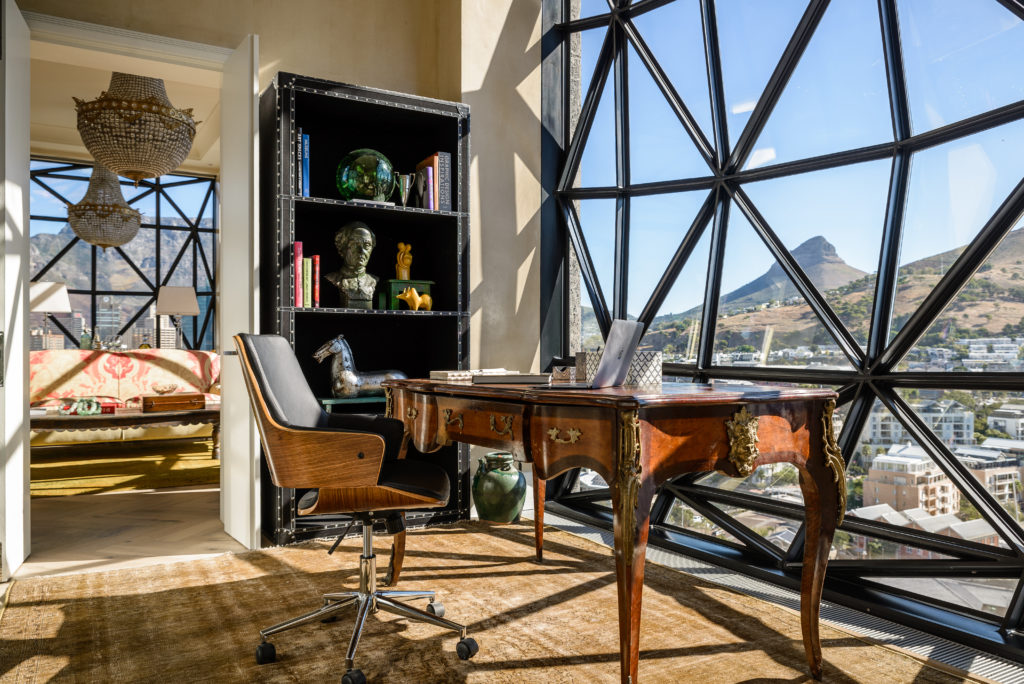 hird day, we headed to Franschhoek with Uber (yes Uber!) Their service is easily available, at least in Cape Town and Johannesburg. Franschhoek is located approximately 45 minutes from Cape Town and is nestled in the vineyards. This is the “other” wine town besides Stellenbosch. This was my first time there and I found it more charming than its competitor. Hotels there range from 5-star to 3-star. We stayed at The Protea by Marriott, which was just reopening that weekend and now offers an onsite restaurant. This is an ideal choice for budget-conscious people or small groups, and everything has been renovated. Franschhoek has numerous wineries to visit, and if you do not have the time to use the wine tramway, Tuk Tuks (auto rickshaws, covered and with 3 wheels) are waiting around and will take you from place to place. Besides the wineries, the town is also extremely popular for its great shopping and its culinary experiences. There are many dining choices, but we tried La Petite Colombe, the new restaurant at Le Quartier Francais Hotel and were quite impressed by their tasting menu.
hird day, we headed to Franschhoek with Uber (yes Uber!) Their service is easily available, at least in Cape Town and Johannesburg. Franschhoek is located approximately 45 minutes from Cape Town and is nestled in the vineyards. This is the “other” wine town besides Stellenbosch. This was my first time there and I found it more charming than its competitor. Hotels there range from 5-star to 3-star. We stayed at The Protea by Marriott, which was just reopening that weekend and now offers an onsite restaurant. This is an ideal choice for budget-conscious people or small groups, and everything has been renovated. Franschhoek has numerous wineries to visit, and if you do not have the time to use the wine tramway, Tuk Tuks (auto rickshaws, covered and with 3 wheels) are waiting around and will take you from place to place. Besides the wineries, the town is also extremely popular for its great shopping and its culinary experiences. There are many dining choices, but we tried La Petite Colombe, the new restaurant at Le Quartier Francais Hotel and were quite impressed by their tasting menu.
Soon enough it was time to leave the Western Cape and fly to Port Elizabeth in the Eastern Cape where my friend Neil, owner of Lyon Safaris and Tours, was waiting for us. This was a return visit for me, to the malaria-free Eastern Cape region and the birthplace of Nelson Mandela. But this time, we would visit two new places: Oceana Beach Resort and the world-renowned Shamwari Game Reserve.
Honeymooners and Nature lovers take note: Oceana Beach Resort in Port Alfred is the place for you.Only seven totally deluxe suites await, the service is extremely attentive but discreet, and you will feel rejuvenated after a day or two of just enjoying the scenery. Best views of the Indian Ocean guaranteed. There is an option for a game drive as well in this Big 2 reserve.
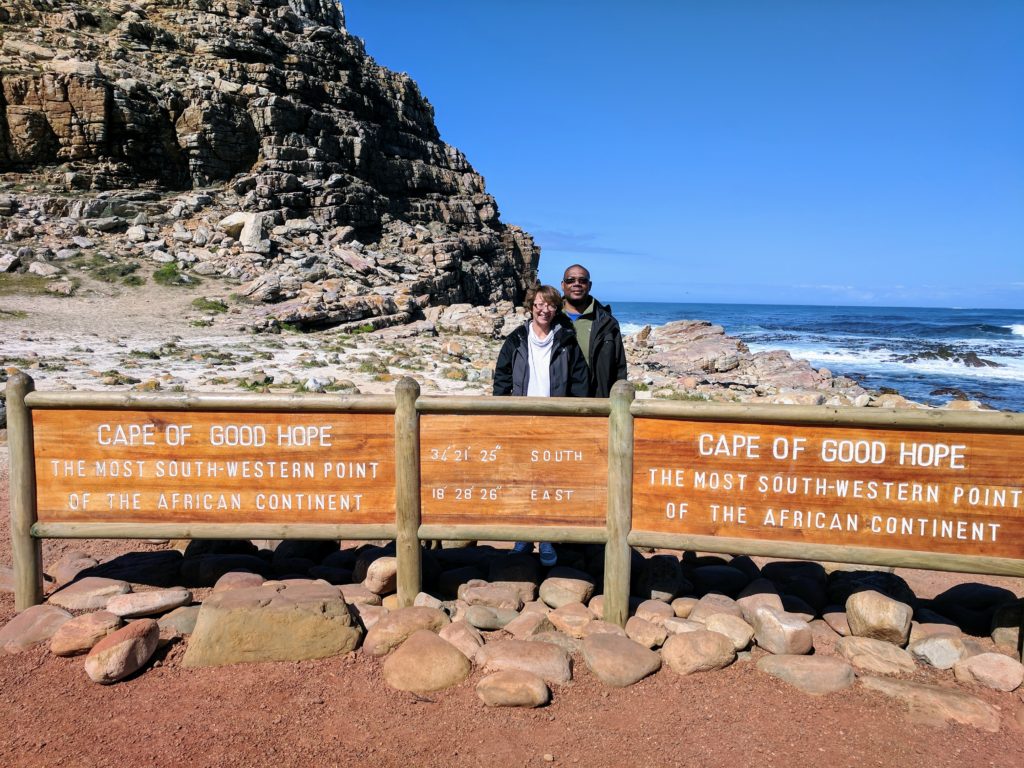 Only an hour and thirty minutes away is Shamwari Game Reserve. Did you know Shamwari means friend in the Shona language? Many US travelers go there (many celebrities too, I found out), so I wanted to pay a visit. Our very experienced ranger Mino took care of us for two days. Not only did he make sure that my husband would enjoy his first safari experience, we saw the Big 4 in our first game drive. He also made sure to show me each of the six Shamwari lodges. All are quite different, but each caters to their guests’ individual preferences. Most will go through a renovation (one by one) in 2018. Our favorite was Sarili Lodge. I was also extremely touched by the work accomplished at the Shamwari Rehabilitation Centre, which helps to rescue, rehabilitate and care for sick, injured, abandoned ororphaned animals, and by the work of the Born Free Foundation, which strives to save animal lives, stop animal suffering, and to keep wildlife in the wild. The game reserve is considered ‘modest’ at 250 sq. kilometers, so you have to stay three or four nights if possible. Since my last visit three years ago, there seems to be more wildlife and it also seems easier to come closer to admire these gorgeous and captivating animals
Only an hour and thirty minutes away is Shamwari Game Reserve. Did you know Shamwari means friend in the Shona language? Many US travelers go there (many celebrities too, I found out), so I wanted to pay a visit. Our very experienced ranger Mino took care of us for two days. Not only did he make sure that my husband would enjoy his first safari experience, we saw the Big 4 in our first game drive. He also made sure to show me each of the six Shamwari lodges. All are quite different, but each caters to their guests’ individual preferences. Most will go through a renovation (one by one) in 2018. Our favorite was Sarili Lodge. I was also extremely touched by the work accomplished at the Shamwari Rehabilitation Centre, which helps to rescue, rehabilitate and care for sick, injured, abandoned ororphaned animals, and by the work of the Born Free Foundation, which strives to save animal lives, stop animal suffering, and to keep wildlife in the wild. The game reserve is considered ‘modest’ at 250 sq. kilometers, so you have to stay three or four nights if possible. Since my last visit three years ago, there seems to be more wildlife and it also seems easier to come closer to admire these gorgeous and captivating animals
I recommend at least a day in Johannesburg
Our last stop was the city of Johannesburg. This was my favorite stop this time around. I wish I could have had more time to really feel the pulse of this city. It is the largest in South Africa, and I’d like to understand its diversity better. Undeniably, poverty there remains a concern–but Johannesburg has a lot to offer to its visitors and it’s definitely worth a stop. I enjoyed my time in vibrant Soweto and could have spent the entire day at the fascinating Apartheid Museum. I will definitely be back in Johannesburg!
There is just one aspect I have not talked about, and yet this is the one thing that besides wildlife, culture, scenery, food, and wine will always draw you back to South Africa: its people. Their smiles, their kindness, a willingness to help, and their true love for their country will make your trip deeper and richer and will have you planning your next trip back as you wait for your airplane to go home.

